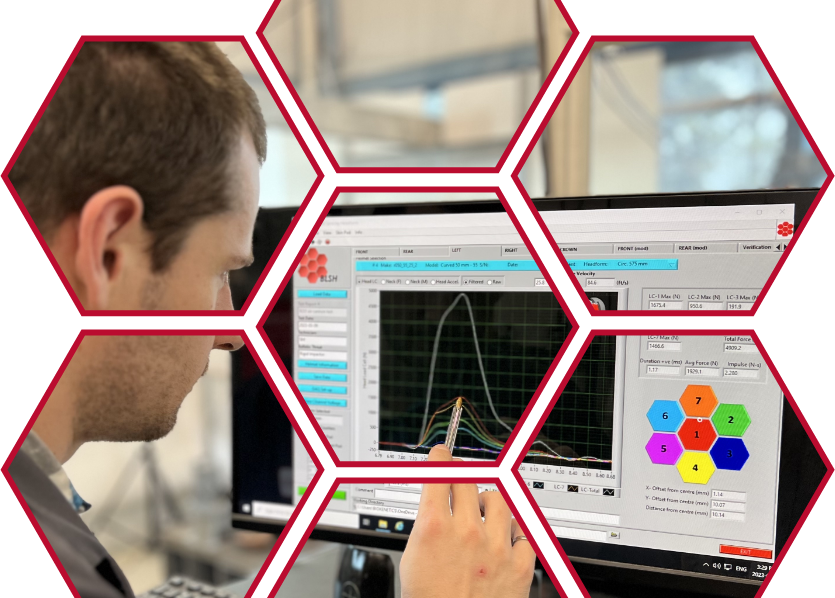
With the increased use of explosive and ballistic weapons in modern conflicts, having definitive ways of testing and evaluating the threat threshold of explosions and the risk of human damage is essential for safety and prevention. From concussive damage to the risk of being impaled by shrapnel etc., dangerous environments present a wide variety of concerns for military and law enforcement professionals.
To mitigate harm and allow for safe and effective operation in high-risk environments, blast testing is an essential component of official safety ratings and use guidelines. Below, we’ll take a closer look at how engineers and researchers evaluate risks like blast effect, and utilize standardized testing to develop protective measures designed to avoid biokinetic damage. Read on to learn more.
What Does Blast Effect Testing Evaluate?
Blast effect testing is a multi-faceted endeavour that aims to identify how the human body responds to explosions in a given context for a wide variety of applications. Testing is designed to meticulously analyze the transfer of energy during/after blast waves and how it affects the human body, specifically focusing on damage caused to vital organs and tissues by shockwaves. By understanding how different levels and circumstances of concussion force interact with the human body, it becomes easier to design protective equipment, measures, and protocols that can help avoid the harm caused by exposure. Forming an accurate understanding is vital to creating universal standards that inform how such protection is evaluated and assessed.
Personal Protective Equipment (PPE) Development
Blast force testing is essential when it comes to designing adequate protective equipment for specific applications. From blast-resistant clothing to advanced helmets and other specialized gear, researchers leverage insights gained from testing scenarios to design PPE that acts as a formidable shield against injury. The goal of blast testing, in most cases, is to result in products and solutions that don’t reduce the chance of external harm but that allow a user/wearer to perform their duties as normally and efficiently as possible with a proven reduction in the severity of harm.
Optimal Body Armour Design
Body armour can be a vital tool for self-protection when in dangerous scenarios where the risk of explosives posing a threat is existent, but only if it is able to perform at the level necessary. Blast effect testing plays a pivotal role in evaluating the performance of body armour and refining its design for optimal results. Blast effect testing allows researchers to determine how different materials and configurations respond to blast forces and create sufficient armour in turn. Effective body armour not only grants a high level of personal protection, but should also be able to properly fit the unique anatomical characteristics of the wide range of individuals who use it. Body armour needs to conform to the body as seamlessly as possible for the best performance, meaning factors like gender-specific anatomical differences can significantly alter fit and performance. Blast testing can showcase any unexpected or circumstantial vulnerabilities and allow for designers to address any issues uncovered during testing.
Shock Absorption Technologies
Shock absorption is a key component that helps mitigate the transfer of energy from blast waves. By cushioning, redistributing and decoupling kinetic force safely, the chance of serious or potentially fatal internal injuries following an unexpected blast event are lowered. Cushioning systems and their associated shock-absorbing materials dissipate kinetic energy and reduce the force localized on the body itself. Furthermore, blast energy deflection and decoupling are essential to avoiding serious harm to vital organs and can often be a literal life-saver in the field.
Establishing Injury Thresholds
In order to establish viable safety standards, testing must first determine the threat threshold of specific levels of blast energy on organic tissue, both externally and internally. Blast testing aims to create dependable qualitative and quantitive standards of evaluation in order to design protective measures that lower the potential for damage. Such testing involves the use of instrumented animal and physical surrogates, i.e. test dummies, as well as utilizing existing human injury data (i.e. documented injuries associated with blast damage) to reach a comprehensive understanding of how the body reacts to specific forces. Biomechanical and physiological assessments, whether conducted via live testing or using historical data, is a crucial part of assessing the threat presented by concussive explosions, resulting shrapnel, etc.
An Iterative Journey towards Excellence
Biomechanical testing and risk mitigation are never stagnant practices. As threat levels and mechanisms continue to evolve, it is crucial to adopt a perspective of constant improvement in order to ensure that protective measures are as effective as possible. Each round of testing brings new, valuable data that contributes to a greater understanding of the effects of explosive forces on the human body. The insights gained from each round of testing inform the next, leading to advancements in protective gear and strategies. This iterative approach ensures that the field remains dynamic, responsive to emerging threats, and committed to enhancing human safety in the face of evolving challenges.
Creating a Safer Future, One Test at a Time
At Biokinetics, we recognize just how important it is to develop and uphold rigorous standards that keep human actors safe when it matters most. For over 45 years, we’ve partnered with industry leaders across North America to evaluate various aspects of ballistic testing in our fully equipped laboratory or in collaboration with external facilities. Our testing procedures adhere to industry standard specifications and can be tailored to meet the specific needs of your exact applications. Biokinetics is proud to offer industry-leading expertise and a dedication to results that you can trust when it matters most.
Contact us today to learn more!

